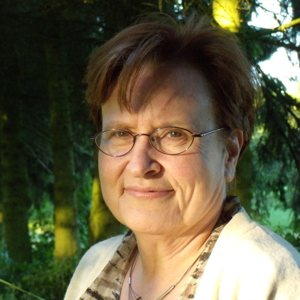October 11, 2022
Day 1 -
7pm

1345 Ave. Lalonde, Montréal, QC H2L 5A9
Get your tickets
Annette
Vande Gorne
She founded and managed Musiques & Recherches and the Métamorphoses d’Orphée studios (Ohain, 1982). She also launched a series of concerts and an acousmatics festival called L’Espace du son (Brussels, 1984; annual since 1994), after assembling a 60-loudspeaker system, an acousmonium, derived from the sound projection system designed by François Bayle. She is the editor of the musical aesthetics review Lien and Répertoire ÉlectrO-CD (1993, 1997, 1998), a directory of electroacoustic works. She also founded the composition competition Métamorphoses and the spatialized performance competition Espace du son. She gradually put together Belgium’s only documentation centre on that art, available online at www.musiques-recherches.be Program
Haïkus(2016-20) 57’16"
• Jour de l’an [1/2] (2020), 4:39
1. Feux d’artifice (d’après Debussy), 4:39• Printemps (2016), 8:02
2. Jeux d’oiseaux, 2:55• Été (2018-19), 11:24
3. Jeux d’eau, 2:24
4. Jeux d’enfants, 2:40
5. Jeux d’insectes lancinants, 2:45• Automne (2019-20), 13:03
6. Songe d’un après-midi d’été, 5:06
7. Voyage immobile, 1:24
8. Danse folle des feux follets, 1:55
9. Jeux mécaniques, 4:36• Hiver (2016-18), 14:07
10. Jeux étendus, brouillard, 2:53
11. Jeux fragmentés, feuilles d’automne (2020), 2:34
12. Jeux répétés, 2:54
13. Jeux de pas sur la neige, 2:15• Jour de l’an [2/2] (2020), 5:56
14. Jeux monotones, 3:58
15. Jeux de grains au coin du feu, 3:12
16. Jeux de sons, 4:30
17. Jour de fête, 5:56
To François Bayle, whose prodding, ceaseless research on the sound-image has allowed the experience of this work.
This piece was inspired by the shortness of the haiku and its long resonance in the imagination. It evokes contrasting realms from the five Japanese seasons set within an ambiophonic space (spread over 16 channels in concert).
Nature, the cycle of its seasons and the human activities pertaining to them, provides the perfect playground for a sonic landscape, a genre native to acousmatic music. I had already dabbled in it with Paysage / vitesse in 1986.
This time, series of short tableaux, one per season, use a selection of classical and contemporary Japanese haikus to stimulate an imaginary world, mental pictures, and emotional memories in each listener. These tableaux rest on the same pictures and dynamics/movements the Western repertoire offers, from Antonio Vivaldi to Jean-Michel Jarre.
The prime quality of a haiku according to the disciples of Bashô — invariance and fluidity — is answered by the “permanence and variation” pair from Pierre Schaeffer’s typology, which characterizes any Apollonian style where “all is order and beauty” (Charles Baudelaire).
[From electrocd.com. English translation: François Couture]

Credit : Chantale Laplante
Iannis Xenakis
100th anniversary!
A mathematician, architect, musician, writer, teacher, and graphic designer, Greek composer Iannis Xenakis was without doubt one of the leading figures in the musical avant-garde of the 20th century. Following his collaboration with Le Corbusier for the Philips Pavilion at the Brussels World’s Fair, Xenakis exhibited his first “polytope” at the Montréal Expo ‘67. In 1971, as part of the opening ceremony of the fifth annual Festival of Arts Shiraz-Persepolis, he presented Polytope of Persepolis, his longest electroacoustic music composition.
Program
Persépolis (1971) 56’
Digital 8 channel version from the original.
Persépolis is neither a theatrical spectacle, nor a ballet, nor a happening. It is visual symbolism, parallel to and dominated by sound. The sound, the music, must absolutely prevail. This music corresponds to a rock tablet on which hieroglyphic or cuneiform messages are engraved in a compact, hermetic way, delivering their secrets only to those who want and know how to read them. The history of Iran, a fragment of the world’s history, is thus elliptically and abstractly represented by means of clashes, explosions, continuities and underground currents of sound.
– Iannis Xenakis, original program note.
Mise en espace by Louis Dufort

Xenakis in his workshop, circa 1970, credit: Michèle Daniel, Coll. Famille IX DR.